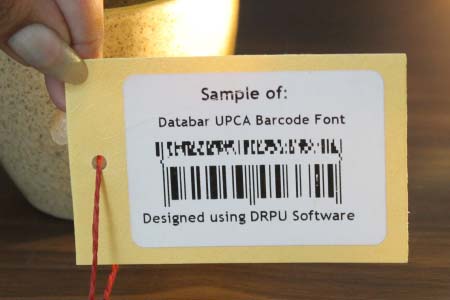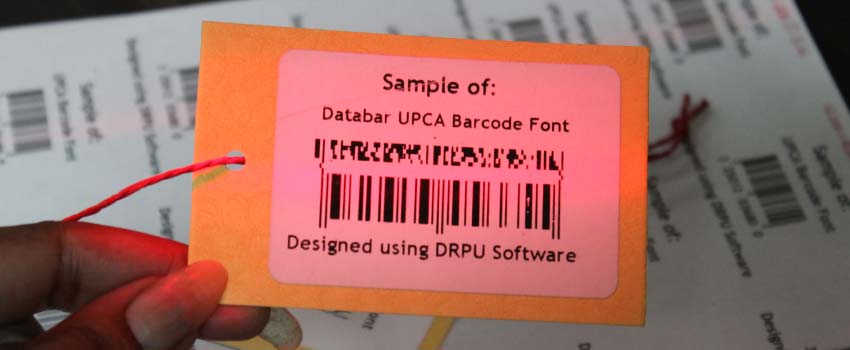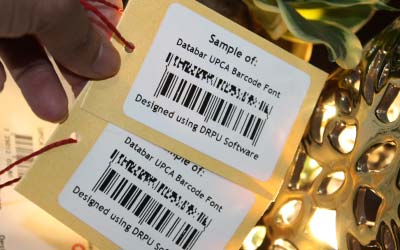This barcode is widely used in the retail industry and can help businesses streamline their operations, reduce costs, and improve customer service. In this article, we will discuss the advantages of using Databar UPCA barcodes.
Databar UPCA barcodes and regular UPCA barcodes are used in different industries. Databar UPCA barcodes are typically used in the grocery and food industry, where there is a need to encode additional information, such as expiration date and lot number. Regular UPCA barcodes are used in a variety of industries, including retail, healthcare, and manufacturing.

🔖TAGS:
Databar UPCA Barcode Databar UPCA Barcodes: Decode, Size and ReadStructure, Length, and Scanning of Databar UPCA BarcodePosted By: Tech Solution | Last Updated On:
Advantages of Using a Databar UPCA Barcode
-
Data Capacity :-
Databar UPCA barcodes have a higher data capacity than traditional UPC (Universal Product Code) barcodes. They can encode up to 74 digits, compared to the 12 digits that can be encoded in a standard UPC barcode. This increased data capacity allows businesses to encode more information in the barcode, such as expiration dates, serial numbers, and lot numbers.
-
Efficient Point of Sale Processing
:-
Databar UPCA barcodes can improve the efficiency of point of sale processing. When a product is scanned, the barcode can be linked to the pricing system, which can automatically calculate the price and process the transaction. This can help businesses reduce the time it takes to process transactions, which can improve customer service and increase revenue.
-
Improved Supply Chain Management
:-
Databar UPCA barcodes can improve supply chain management by providing businesses with real-time information about the movement of products through the supply chain. When a product is scanned, the barcode can be linked to the supply chain management system, which can track the product from the manufacturer to the retailer. This can help businesses improve the efficiency of their supply chain, reduce costs, and improve customer service.
-
Enhanced Customer Service :-
Databar UPCA barcodes can enhance customer service by providing customers with real-time information about products. When a product is scanned, the barcode can be linked to the product information system, which can provide customers with information about the product, such as its ingredients, nutritional information, and country of origin. This can help businesses improve customer satisfaction and loyalty.
-
Reduced Labor Costs :-
Databar UPCA barcodes can help businesses reduce labor costs by automating many of the processes involved in managing inventory and processing transactions. When a product is scanned, the barcode can be linked to the inventory and pricing systems, which can automatically update stock levels and calculate the price. This can help businesses reduce the need for manual data entry and processing, which can save time and reduce labor costs.
-
Improved Inventory Management :-
Databar UPCA barcodes can improve inventory management by providing businesses with real-time information about their stock levels. When a product is scanned, the barcode can be linked to the inventory system, which can update stock levels and provide real-time information about the availability of the product. This can help businesses reduce the risk of stock shortages or overstocking, which can lead to lost sales and wasted resources.
-
Universal Compatibility :-
Databar UPCA barcodes are compatible with most barcode scanners and systems, making them a universal choice for businesses. They can be used with both handheld and fixed scanners, as well as mobile devices. This compatibility allows businesses to use a variety of scanners and systems, which can save them money and increase efficiency.
-
Accurate Pricing :-
Databar UPCA barcodes can help businesses ensure that they are pricing their products accurately. The barcode can be linked to the pricing system, which can ensure that the correct price is displayed at the point of sale. This can help businesses avoid pricing errors and improve customer satisfaction.
Conclusion: Databar UPCA barcodes offer many advantages to businesses. They are universally compatible, have a high data capacity, can improve inventory management, ensure accurate pricing, improve point of sale processing, enhance supply chain management, provide real-time information to customers, and reduce labor costs. These benefits can help businesses improve efficiency, reduce costs, and improve customer service, which can lead to increased revenue and profitability.
Limitations of Using Databar UPCA Barcodes
While there are many advantages to using Databar UPCA (Universal Product Code A) barcodes, there are also some limitations that businesses should be aware of. In this article, we will discuss the limitations of using Databar UPCA barcodes.

-
Limited Read Range:
Databar UPCA barcodes have a limited read range compared to other types of barcodes. This means that the barcode must be within a certain distance of the scanner for it to be read. The read range of a barcode scanner depends on the type of scanner and the environment in which it is being used. If the barcode is too far away from the scanner, it may not be read, which can cause delays and errors.
-
Limited Compatibility with Older Systems:
Databar UPCA barcodes may not be compatible with older barcode scanning systems. Older systems may not be able to read the higher density of the Databar UPCA barcode or may not have the necessary software to decode the information contained in the barcode. Businesses that are using older systems may need to upgrade their equipment to be able to use Databar UPCA barcodes.
-
Limited Capacity for Text:
While Databar UPCA barcodes have a higher data capacity than traditional UPC (Universal Product Code) barcodes, they still have a limited capacity for text. This can be a limitation for businesses that need to encode a large amount of text, such as product descriptions or instructions. If the barcode is unable to encode all of the necessary text, the business may need to use additional barcodes or labels.
-
Limited Security:
Databar UPCA barcodes do not have any built-in security features. This means that anyone with a barcode scanner can read the information contained in the barcode. If the barcode contains sensitive information, such as pricing or inventory data, this can be a security risk. Businesses may need to take additional security measures, such as encrypting the data or limiting access to the scanner, to protect sensitive information.
-
Limited Space for Printing:
Databar UPCA barcodes require a certain amount of space for accurate printing. This can be a limitation for many businesses that have limited space on their products or packaging. If the barcode is too small in size, it may not be read by the barcode scanner. If it is too large, it may not fit on the product or packaging.
-
Limited Versatility:
Databar UPCA barcodes are designed specifically for use in the retail industry. They may not be suitable for use in other industries, such as healthcare or manufacturing, where different types of barcodes may be required. Businesses that operate in multiple industries may need to use different types of barcodes to meet their needs.
Databar UPCA barcodes offer many advantages to businesses, but there are also some limitations that businesses should be aware of. These limitations include a limited read range, limited compatibility with older systems, limited space for printing, limited capacity for text, limited security, and limited versatility. Businesses that are considering using Databar UPCA barcodes should carefully evaluate their needs and consider these limitations before making a decision.
